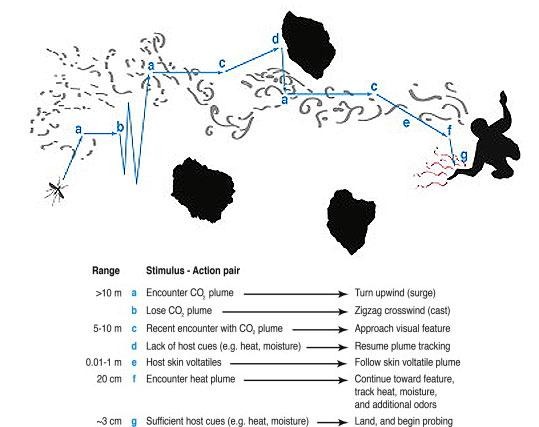Science Detects How Mosquitoes Always End Up Biting You
This week a study has been published on the ways and means mosquitoes employ to find their prey – namely you. Instead of just plopping down on whatever land they see, hoping to find some blood inside, the mosquito employs a range of senses to hunt you down and pierce your skin. Mosquitos, researchers suggest this week, use a combination of olfactory, visual, and thermal cues to find your arm, your leg, or your cheek. Whatever they need to do to suck your blood: they're going to do it.
The first step a mosquito takes in finding its prey is to smelling you. Once they've smelled you, they see you. Once they're close enough, they seek out the warmest spot on your body – or at least a suitably warm spot – and they land. Once they've landed... you know the rest. Here's how it all goes down:

Step 1: Mosquito detects CO₂ – likely through your breath.Step 2: CO₂ activates mosquito's visual senses – the bug looks for you, looking for recognizable human or animal features.Step 3: Once the mosquito is close enough to its target, it begins detecting thermal clues to guide it to the optimal place for blood-sucking.
According to this study, humans become visible to mosquitoes at a distance of between 5 and 15 meters. Mosquitoes are able to detect CO₂ plumes of at distances further than 15 meters, at which point the tracking begins.
This information may help bug repellant sprays, ways, and means become far more successful in the near future. For now all we can tell you is – hold your breath.
You can find out more in the paper "Mosquitoes Use Vision to Associate Odor Plumes with Thermal Targets" as published with Science Direct by authors Floris van Breugel, Jeff Riffell, Adrienne Fairhall, and Michael H. Dickinson under code doi:10.1016/j.cub.2015.06.046.
